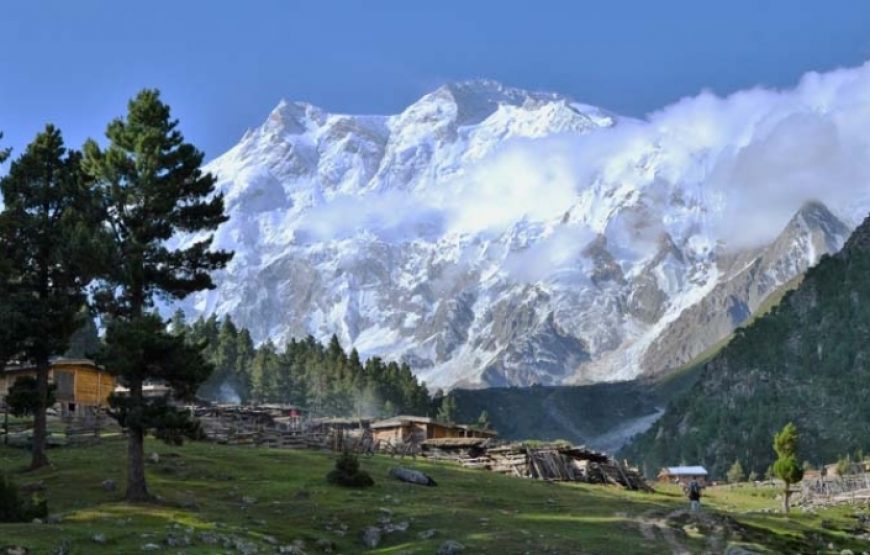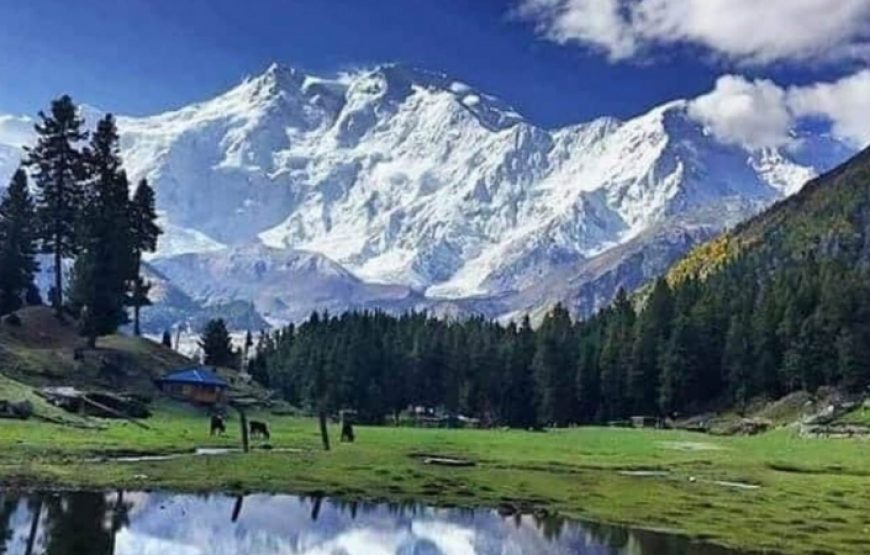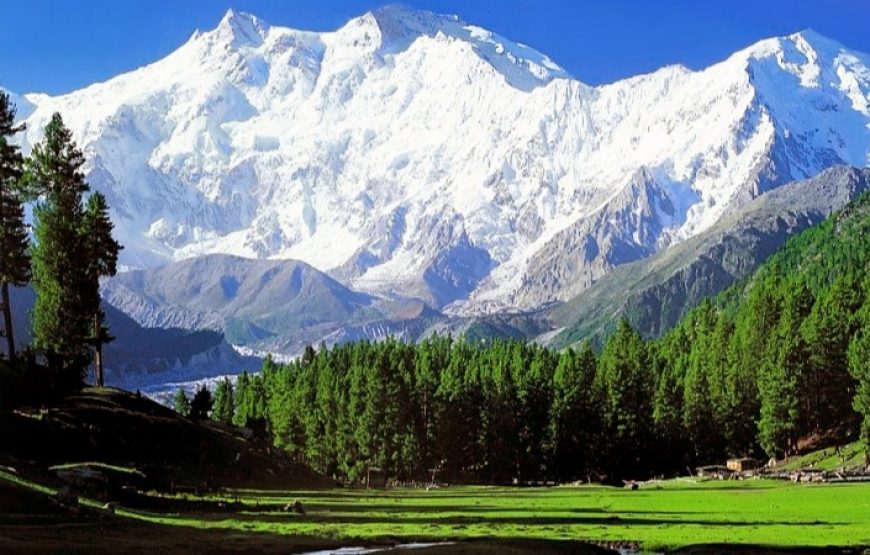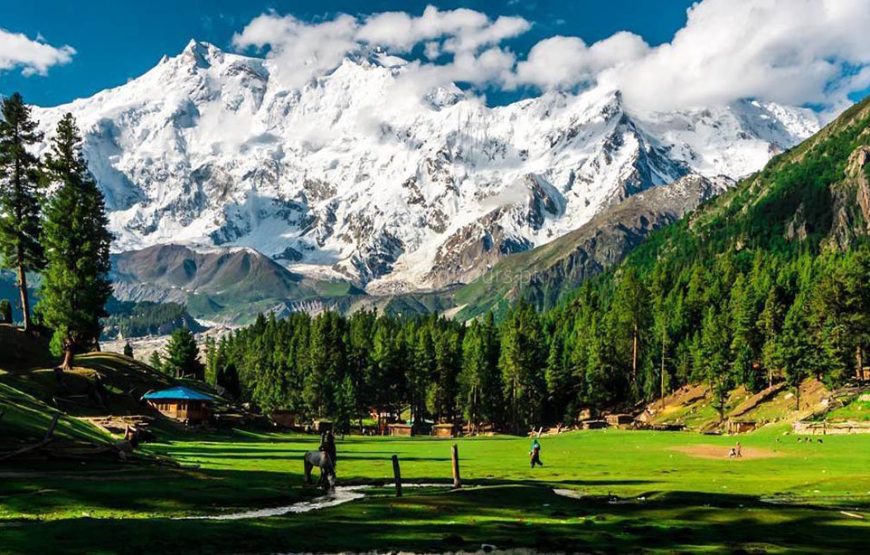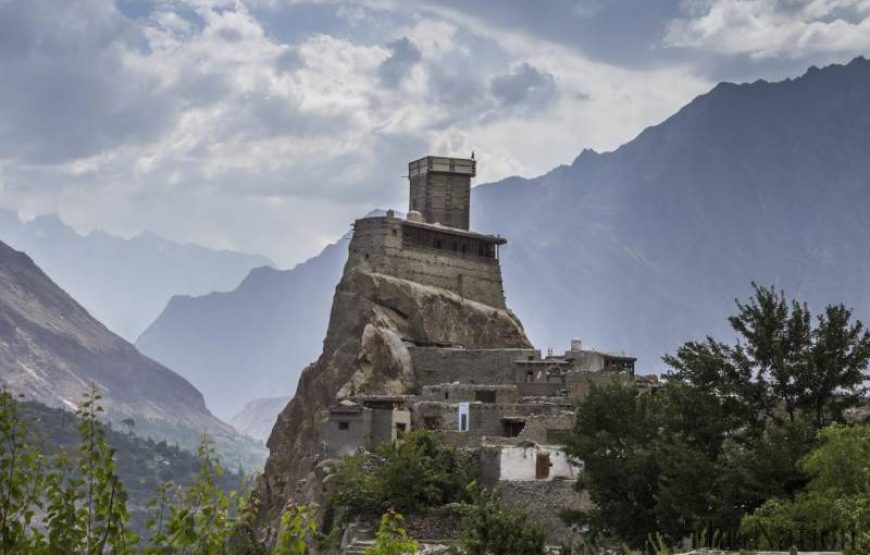Overview
Nanga Parbat, standing at 8,125 meters (26,813 feet), is the second-highest mountain in Pakistan’s western Himalayas and ranks ninth in the world. It is renowned as one of the most challenging mountains to climb, earning nicknames like “Naked Mountain” due to its imposing and rugged appearance and “Killer Mountain” because of the numerous tragic incidents that occurred during early expeditions, resulting in one of the highest casualty rates among all mountains.
This colossal massif comprises a 20-kilometer-long series of peaks and ridges culminating at 8,125 meters, the primary peak named Nanga Parbat. The region also boasts several other peaks, including South Jalipur Peak, North Jalipur Peak, Buldar Peak, and Rupal Peak, among others. These lesser-known peaks offer opportunities for trekking and exploration in the vicinity.
Nanga Parbat is located in the Diamar District of Gilgit-Baltistan, Pakistan, just south of the Indus River. The mountain presents three distinct climbing routes, each with prominent base camps: the Rupal Face (Eastern Face), the Raikot-Fairy Meadow Face (Northwestern Face), and the Diamir Face (Western Face). These faces differ significantly in terms of appearance and geography, and their routes originate from different valleys. The Rupal Face provides trekkers with breathtaking close-up views of the mountain.
A comprehensive Around Nanga Parbat trek program involves visiting all three faces and crossing high passes along the way. Trekkers can experience the cultural diversity and natural beauty of the surrounding areas while making a complete circuit around the mountain. The trek reaches its highest point at Mazeno, a semi-technical pass, where fixed ropes are often necessary for navigating steep crevassed slopes. The journey concludes at Fairy Meadows, aptly named for its stunning natural beauty and surroundings.
Nanga Parbat, also known as Killer Mountain, has a grim history of fatalities, making this trek a poignant exploration of the mountain’s contrasting facets. It takes you from the lush, green alpine meadows of Rupal Valley to the stark and challenging landscape of Diamer Valley. The approach to the mountain passes through delightful Alpine terrain, characterized by pine forests, meadows adorned with colorful flowers, and provides a breathtaking view of Nanga Parbat from the Indus River, a sight that is truly awe-inspiring.
View More
FAQs
Pakistan has only been negatively advertised by the mainstream international media. A country of more than 220 million people, Pakistan is among the low crime rate states. An odd incident may happen as it happens everywhere in the world. Feedback, guest reviews, and Vlogs by international travelers visiting different regions of Pakistan at different times are testimony safety and warm hospitality of its people. Besides holiday makers, there are hundreds of foreigners working in multinational companies, NGOs, and diplomats serving foreign missions who travel the length and breadth of Pakistan comfortably. Tourists are only advised to use the services of registered and reputed travel agencies to ensure the most comfortable and reliable holiday possible.
As health regulations change from time to time, it is best to check for the latest advice while applying for a Pakistani visa at the Pakistani embassy in your country. After the outburst of Covid 19, there are strict regulations by airlines and destinations on traveling. Vaccination certificates against Covid 19 must be carried out while Covid 19 negative (PCR) tests are mandatory before traveling to and out of Pakistan. For further assistance please visit https://covid.gov.pk/
The Around Nanga Parbat Trek is suitable for people with at least some prior trekking experience yet age doesn't matter. It's the allure of the KILLER MOUNTAIN that fascinates visitors of all ages. This itinerary is a blend of adventure and culture where besides an adventurous trek covering all three faces of the Killer Mountain, a brief visit to the Hunza Valley adds beauty to the plan.
Please share your plan, dates and other people planning to travel with you so that we can arrange accordingly.
This trek is slightly physically demanding but is not as strenuous as other treks in the Baltistan region. a little prior walking practice should work.
The highest altitude point is Mazeno Pass 5399m which is the only challenge on this trek
There is a detailed list of must-carry and optional equipment’s which covers the required equipment and baggage to carry. If you have previous trekking experience, you may select your personal requirement.
● Important medicine/first aid kit
● Hiking backpack and sticks
● Head-torch/flashlight with extra batteries
● Sunglasses
● Sunblock and lip balm
● Water bottle
● Glows and warm pairs of socks
● Warm cap, hat, and scarf (to avoid scorching sun)
● Full sleeves shirt
● Waterproof trousers and raincoat
● Trekking shoes and flip-flops
● Trekking poles (optional)
● Warm layers of clothing
● Camera with additional batteries (optional)
● Cell phone with charger and charging bank (optional)
● Binoculars (optional)
We are a Member Company of Pakistan Association of Tour Operators (PATO) and helicopter rescue plan is part of the program we offer.
For any rescue mission we are required to deposit advance payment in favor of PATO out of which a small percentage is non-refundable (will be discussed at the time of confirmation) while rest is refundable (in case service was not availed). This entire amount is required to be paid by the client in advance. If there is any insurance policy on part of the client that can cover the impending bill, that needs to be submitted.
We do. We can organize customized tours/treks for solo trekkers and groups of any volume, but we prefer not more than 12. All we need is the information on the interest, dates, and number of persons with special instructions if any.
The maximum size of our groups is 20 persons. The average size of our groups is 10 members.
During this trek, all three meals including breakfast, lunch, and dinner) will be served to the participants. A combination of Foreign and Pakistani meals will be included in our food plan. Breakfasts will have coffee, cereal, tea, eggs, muesli/porridge, bread/chapatti included. Lunches include fresh meat and veggies, chapatti, rice etc. For Nanga Parbat day hike, a light packed lunch with some dry fruit will be carried.
The dinner will always be served in the hotel restaurant and the participants will gather to eat the food freshly prepared.
For the Fairy Meadows and Nanga Parbat BC Trek, proper accommodation will be arranged in the huts on a single occupancy and on twin/double sharing basis. Likewise, in Islamabad, Hunza and Chilas, accommodation will be arranged in hotels.
During the trekking days at Fairy Meadows, breakfast time will be communicated the previous evening and a decent breakfast at the hotel restaurant will be served. The day remains busy exploring the sites and a light lunch will be arranged or packed lunch will be carried to save the time.
Generally, one hour is required for the lunch which makes it a very good time to gain your strength back, relax, write and read etc.
Trekking after the lunch will be shorter as compared to trek before the lunch. Upon arrival to the campsite the participants will be served a hot beverage and dinner will be served. Participants can rest, read, write, socialize, film and photograph upon reaching their destination. Temperature drop at night in the high altitude areas normally; participants can get comfortable in their huts/rooms and get a good sleep before next day.
All nationalities must obtain a valid visa for entry into Pakistan. Tourists are advised to contact the nearest Pakistan Embassy/High Commission/consulate in their respected country/city. For the detailed information on visa, please refer to https://visa.nadra.gov.pk/ Pakistan does have visa on arrival facility for a number of countries. Please check the details here https://visa.nadra.gov.pk/visa-on-arrival-tourist/
Portable chargers, storage cards and extra batteries may be required during the trekking holiday. We advise you to make a relevant list of adapters, sockets and any other kind of electrical items you might require keeping your devices function as long as possible.
Tipping in Pakistan is not obligatory; it is entirely at one’s own discretion. Staff generally expects to be tipped at the end of the tour. If the staff during the trip performed well, a good tip is considered well-deserved. However, there is no defined amount as it depends on the situation, number of days spent and performance of the staff. With groups clients can join in to add to an amount.
